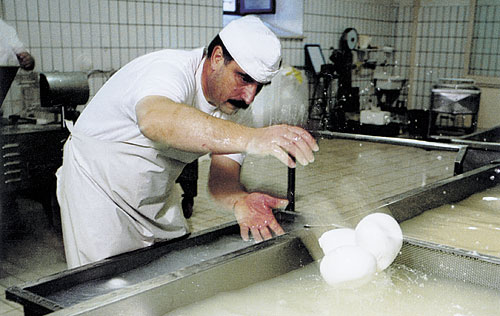The answer may surprise you. I’m guessing the majority of you are saying France, but that would be non. While the French baguette has a je ne sais quois international brand appeal connoting everything from the Eiffel tower & Notre Dame to elderly men donning berets & pedaling a bicycle with crusty baguettes tucked under their arms, when one really gets down to the "dark" truth, the French baguette can be wonderful but, the best bread on the planet comes from Germany.
Germany? No, I haven’t lost my marbles and it’s not just my opinion. In 2015 German bread was officially added by the United Nation’s cultural arm (UNESCO) to the organization’s world heritage list. If you’ve not been to Germany, you may disagree, however, consider this: Did you know that Germany has more varieties of bread than any other country in the world? According to the German Institute for Bread (of course there is such a thing in this bread-centric country), there are more than 3,200 types of bread officially recognized in Germany. Many of them are dark in color and not made with wheat flour.
 Breakfasts feature a multitude of healthy breads such as this one in Dresden during the Xmas markets.
Breakfasts feature a multitude of healthy breads such as this one in Dresden during the Xmas markets.France is estimated to have a few hundreds of bread types, so why does Germany have exponentially more? One reason is due to Germany’s fragmented history up until the 19th century. Until that time, what is now known as Germany was a multitude of tiny kingdoms, all with their own distinct culture, dialect, customs, and with their own bread specialties.
The Middle Ages gave birth to today’s iconic German rye bread. Known for its hearty texture and robust flavors, rye-based bread was especially popular in the northern kingdoms as rye was easier to grow than wheat in the north’s colder weather. In the early 1500’s many of the southern duchies passed a law prohibiting the use of wheat for any other purpose other than beer. This further paved the way for rye, spelt, barley and a host of other whole grains for bread use. Quintessential German breads such as pumpernickel became part of Germany’s culinary history at this point.
Germans were way ahead of the current health trend for organic whole-grain breads. Germany doesn’t have the same amount of sunshine as Italy or France, and many areas in spite of global warming are not conducive to growing wheat. Nutritious grains such as rye (an edible grass seed that is turns bread dark brown) and spelt (an ancient high protein whole grain which creates dark bread), however, can be easily grown even in the northernmost parts of Germany.
The truth about Germany’s breads: there is a colossal number of choices and many of them are dark colored breads. Not only are these dark breads significantly more healthy, but they offer wonderful flavors of nuttiness with chewy interiors.
Ya
vol!







































